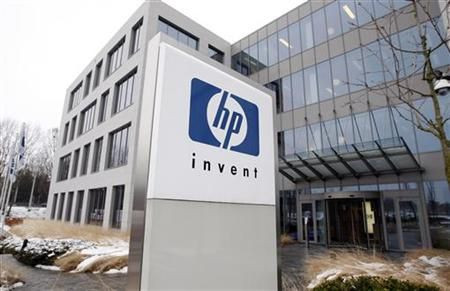What HP Results Mean for Intel, Nvidia?

The weak top line results of Hewlett-Packard Co. (NYSE: HPQ) and its tepid outlook clearly shows the weak demand for consumer PCs, partly due to the overwhelming demand for tablets that is eating into the sales of PCs.
We think every two to three tablets sold is in place of a PC (think a grandma who wants to use e-mail, read the news, surf, and possibly Facebook her grandchildren), so 2.5 tablets cannibalizes one PC, analyst Craig Berger of FBR Capital Markets wrote in a note to clients.
With Apple set to build 45 million tablets in 2011, and with another 25 million to 30 million tablets coming from Samsung, RIM, Motorola, Nokia, and others, the analyst thinks 70 million tablets will cannibalize 28 million PCs in 2011.
California-based HP, which reported its first quarter results yesterday, said its revenues were hit by weaker than expected consumer PC shipments and services demand, partially offset by strength in shipments of commercial PCs.
For the first quarter ended Jan.31, HP earned $2.60 billion, or $1.17 a share, compared with $2.25 billion, or 93 cents a share, in the same quarter last year. Excluding items, the company earned $1.36 a share, topping Street view of $1.29 a share, according to analysts polled by Thomson Reuters.
Net revenues rose 4 percent to $32.30 billion, yet came in below consensus estimate of $32.95 billion.
Berger said HP's results were consistent with his latest PC checks that suggests first quarter 2011 notebook PC builds are trending down by 7 percent to 10 percent quarter-over-quarter, due to weak consumer PC sell-through trends during Chinese New Year and Intel's Sandy Bridge chipset bug issue.
Consistent with the HP results, we heard that corporate PC demand is holding up better than consumer PC demand (more positive for Dell than HP), and we continue to believe that Apple notebook demand remains far stronger than non-Apple notebook demand in the consumer portion of the market, Berger said.
Impact on Intel
Intel (NASDAQ: INTC), like HP, is likely seeing some weakness in consumer notebook PC shipments in the first quarter of 2011, but with some offsetting strength in corporate PC and enterprise shipments.
For Intel, the first quarter of 2011 revenues are likely tracking in the upper half of management's recently revised revenue guidance range of $11.3 billion to $12.1 billion as business progresses as expected.
For the calendar second quarter, Intel's revenues are likely to grow due to the inclusion of McAfee and Infineon Wireless revenues for a full quarter, while the organic business is likely to track flattish sequentially.
Berger, referring to the HP call, said some corporate refresh activities are happening, a plus and the iPad certainly seems to be impacting consumer notebook consumption and growth rates in the US and possibly other geographies too.
However, the analyst said the overall notebook and PC units continue to grow, not shrink, is a relative plus.
For INTC, shares have massively underperformed the rally of the past five months. That said, with the market seeming to posture more defensively, and with some profit taking possible, INTC could be one of those stocks that sells off less than peers, or could potentially even hold its ground given its tablet-driven depressed P/E multiple of 9x (2011 including stock compensation), Berger wrote.
Impact on Nvidia
For Nvidia (NASDAQ: NVDA), the analyst views HP's results to be a slight positive given continuing PC unit growth (+5 percent year-over-year) and given strength in commercial PC client revenue, where discreet graphic chips attach rates are likely higher than lower-end consumer PCs.
Additionally, HP's strength in enterprise storage and servers suggests Nvidia's Quadro and Tesla products could continue to see strength ahead.
For shares of Nvidia, the stock has had a big run in recent months with the advent of 'tablet-mania'. At this point, the analyst do believes much good news is priced into shares and would not be surprised to see some profit taking in the name.
While still somewhat far away, NVDA is a more attractive upside story to us in the $18-$19 range, Berger said.
© Copyright IBTimes 2025. All rights reserved.





















